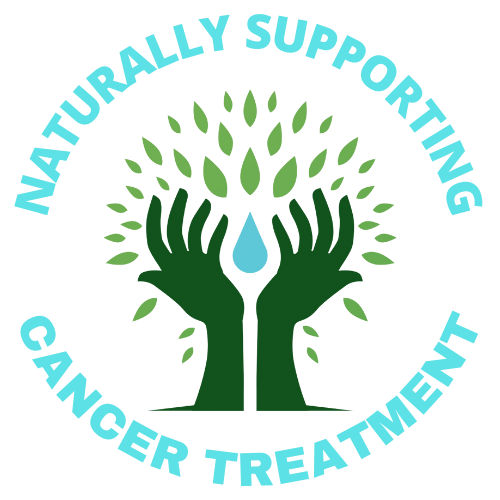Are water filters necessary?
Benchtop water filter
Those of us who live in developed countries turn on our taps and assume that the water we get is safe to drink and use for washing ourselves. After all, it’s been treated and it usually looks clear enough. But I’ll let you judge whether you’re comfortable drinking it and showering/bathing in it without filtering once you’ve read this article.
Water in most countries is treated with chlorine to kill bacteria, which it does really well. This process has dramatically reduced the incidence of waterborne diseases like cholera, typhoid and dysentery. We tend to forget that these were rife in developed countries until the early 1900s, when water chlorination was introduced (1).
The downside of chlorine in the water is that it reacts with organic and non-organic matter in the water to produce what are known as disinfection by-products (DBPs). These DBPs have been shown in epidemiological studies to be associated with reproductive problems and an increased risk of cancer development, particularly of the bladder and rectum (2).
In addition to DBPs, the very fact that chlorine kills bacteria means that it has a significant effect on the human microbiome, both in the gut and on the skin. Our gut microbiome is crucial for good health. When the balance of our microbiome is disturbed, we may suffer digestive problems like ulcerative colitis and Crohn’s disease, which can lead to bowel cancer. You can also develop allergies, put on weight, develop mental problems, and it can affect your immune system, which is part of our defence against cancer (3). Unfortunately, chlorine is absorbed by the skin, so you don’t have to drink it to have these problems.
As well as chlorine, other hormone disrupting compounds can be found in water. One group is known as perfluoroalkyl substances (PFAS). They’re used in a wide variety of applications, including non-stick pans, polishes, paints, waxes, cleaning products, waterproofing and stain proofing products, and firefighting foams. Because of this, they can easily reach our drinking water supplies. All of them have the potential to cause reproductive problems and they build up in the body (2).
Another compound often found in water is bisphenol A (BPA), which is also a hormone disruptor. It’s widely used in producing epoxy resins and polycarbonates. Epoxy resins are used in lacquering metal products like water supply pipes, bottle tops and food cans. Polycarbonates are used for producing food and drink containers, including bottled water. We absorb it in our diet, but it’s also found in water supplies. This is a major concern, as it’s associated with reproductive issues and with breast cancer (2).
Phthalates are also often found in water supplies. They’re also used widely, in everything from cosmetics and skin care products to plastics used for food storage, children’s toys, medical equipment, and construction equipment and clothing. They are also hormone disruptors and cause a variety of reproductive problems (2).
Organic pesticides are also an issue. They’re widely used in agriculture, of course, and there is significant runoff, resulting in high levels in groundwater. But some are used in water disinfection too. These also have significant effects on reproductive health (2).
Oestrogens are another source of concern. Amazingly enough, although many people believe that the Pill is to blame, it contributes less than 1% of the oestrogens in drinking water (4). In some countries, like the US, farmers are allowed to use hormones to help with cattle growth, which leak into the environment from the cattle’s waste (2). Pregnant women’s urine is also loaded with hormones, which get into the drinking water supply. Exposure to these oestrogens has been associated with an increased risk of breast cancer (2).
Heavy metals are also found in drinking water. These include cadmium, arsenic, copper and lead. The first 3 are all connected with an increased risk of cancer. Lead is associated with reproductive, heart and kidney problems in adults. Children are affected more severely, reduced IQ, nervous system dysfunction, hyperactivitiy and learning disabilities (5).
So, although our water may be free from pathogenic bacteria, it’s far from being harmless. That’s where water filters can make a difference. There is a wide range of filters to suit every budget. These range from whole house systems, where water is filtered before reaching the home water supply, to portable systems, which sit on a bench.
My personal favourite comes from a company called WatersCo. Their filtration system has multiple levels, so it removes all chemicals, chlorine, heavy metals and bacteria. It also remineralises the water, so you don’t miss out on the benefits of important minerals. It produces slightly alkaline, magnetised and ionised water, which tastes wonderful.
I have their large system that sits on the benchtop, so it’s portable. Its footprint isn’t too big. The water reservoir is glass, so your filtered water doesn’t sit in plastic. When you buy the unit, it comes complete with all the filters you need for the next 4 years, unlike many of its competitors. They also offer jugs that fit in the fridge if a smaller system suits you better, or an under sink filter if you prefer. To help with your budget, they also allow you to pay in instalments.
They operate in Australia, the US, UK and New Zealand. You can reach them at https://waterscoaustralia.com.au/?rfsn=6115339.7c4dd5. This is an affiliate link, which means that I get paid a small commission if you buy from it. That helps me to keep my website running. :) If you’re in Australia, they have a 10% discount until the end of June 2022, using the code EOFY22.
I hope that you enjoy better-tasting, safer water!

